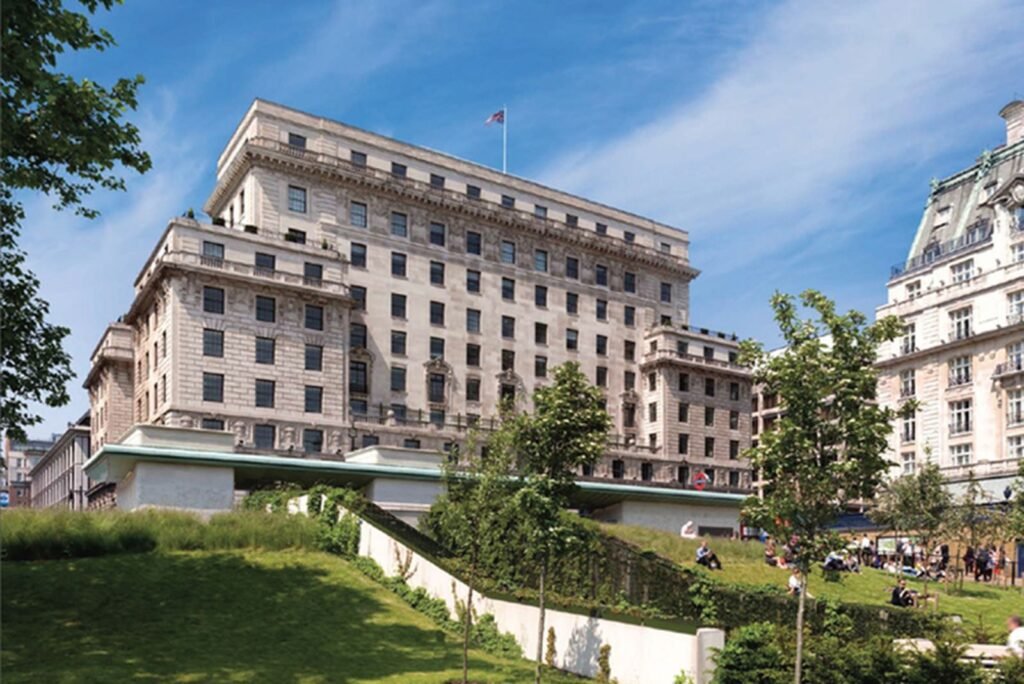Building Connectivity and Agility in a High-Performance Workplace
At Work Transformers, we often help organisations find the right balance between heritage ways of working and the future needs of a dynamic workforce. One of our projects focused on refreshing a high-performance investment firm’s London office—a workplace where tradition, confidentiality, and rigour were deeply embedded, yet the business was eager to embrace modernity, connectivity, and agility.
The Challenge
The client’s office was a space that worked, but not always in the way people needed. Through extensive staff engagement, a number of key challenges surfaced:
- Connectivity gaps: Teams struggled to find colleagues quickly, and opportunities for informal interactions were limited. Leadership often felt inaccessible.
- Resistance to open plan: Many employees, particularly deal teams and associates, strongly voiced that traditional open-plan designs would not support the nature of their work.
- Concentration vs collaboration: Associates required private, focused settings for due diligence, while senior staff sought spaces for knowledge sharing and mentorship. The current environment was one-size-fits-all, supporting neither fully.
- Wellbeing overlooked: Employees highlighted long hours and intense workloads, with limited support for psychological wellbeing, downtime, or informal socialising.
- Meeting room inefficiency: A high proportion of meetings were small or individual, yet the workplace lacked the right settings to support this variety.
The brief was clear: design a modern, agile environment that increased connectivity and collaboration while preserving the discretion and focus needed in a high-performance culture.
Our Approach
We adopted a layered engagement process to ensure recommendations were evidence-led and embraced by staff:
- Surveys: An online workplace survey achieved an exceptional response rate, capturing views on what worked well and what needed improvement.
- Time Utilisation Study: Observations over a week provided hard data on how desks, offices, and meeting spaces were being used.
- Focus Groups & Interviews: Facilitated discussions and one-to-one sessions gave employees a voice in shaping their future workplace.
This approach revealed not only the practical issues but also the cultural sensitivities around change. It meant our proposals could bridge operational needs with the values and identity of the business.
Key Insights
Four themes stood out as central to the strategy:
- Connectivity – A desire for more visibility, quicker access to decision-makers, and spaces that encouraged informal interaction.
- Work patterns vs. space standards – Different roles had very different needs, from highly mobile senior staff to fixed, detail-driven associates. A single workspace model would not work.
- Health & Wellness – Staff wanted better facilities and policies to support long hours and high pressure, from quiet spaces to showers, better dining, and even areas for relaxation.
- Variety of Collaboration – The workplace had to support everything from war-room style deal closures to casual drop-in conversations, something not achieved in the existing layout.
From Insight to Strategy
Our strategy introduced a more agile, human-centred workplace model:
- Zoning for connection: The future workplace was reimagined with social hubs, lounges, and informal café areas strategically placed to encourage chance encounters and vertical connectivity between junior staff and leadership.
- Role-based workstyles: Employees were grouped into distinct workstyles—from highly mobile managing directors to desk-based associates—and supported with tailored settings, from touchdown points to focus booths.
- Wellbeing-led design: Psychological wellbeing was prioritised, with recommendations for quiet lounges, relaxation spaces, upgraded dining, and wellness amenities such as showers and sit-stand desks.
- Collaboration menu: A balanced mix of formal meeting rooms, informal breakout areas, war rooms, and stand-up zones was proposed to support the wide spectrum of teamwork activities.
- Change management: Recognising the cultural resistance to change, we built in a phased approach, with leadership involvement and pilots to test new ways of working before scaling.
The Outcome
The result was a workplace strategy that respected the business’s legacy of high performance while equipping it for the future:
- Greater connectivity across levels, breaking down silos and making leadership more accessible.
- A refined mix of spaces that balanced deep focus with collaboration.
- Improved wellbeing support through better amenities, downtime areas, and policies.
- A more modern and agile workplace identity, aligned with the energy and ambition of the firm.
Why It Matters
This project demonstrates that even in environments with strong traditions, workplace transformation can succeed if approached with evidence, empathy, and pragmatism. It shows that agility doesn’t have to mean abandoning focus, and connectivity doesn’t mean sacrificing confidentiality.
By creating a strategy grounded in research and shaped by employee voices, we helped the organisation evolve towards a workplace that connects, inspires, and sustains high performance.




